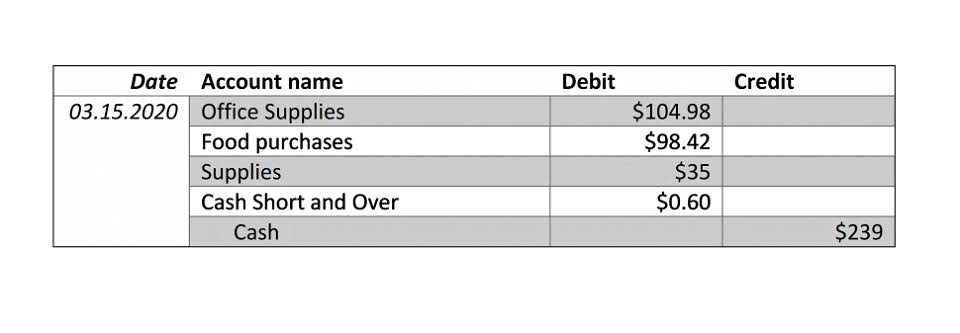
If an entity employs a different timeline from the parent firm, it is prudent to alter the entity to reflect the parent company. There is no distinction between the companies’ or entities’ assets and liabilities thanks to the abolished account receivable and account payable balances. If you’re unsure about the compliance and reporting requirements for your group or for specific subsidiaries, you should seek professional advice. As an example, let’s say that Company ABC has a 40% controlling interest in its unconsolidated subsidiary, Business XYZ, which it created as an SPV for a new construction project in a foreign country that will only last for a year. For example, if the parent company doesn’t bring in as much money as its subsidiaries, together the parent company and its subsidiaries show how much more this conglomerate is worth than the parent company is worth alone. Noncurrent liabilities are liabilities which the company will pay off in the long run (in more than 1 year time).
- If an investor wants to know how each individual subsidiary is doing, it is helpful for the investor to see a combined financial statement, rather than a consolidated statement.
- Consolidated financial statements fill this need by combining the financial data from the main company and the subsidiaries to create a complete and accurate view of the business’s financial position.
- For example, all the expenses incurred for the operations of PPC Company are separate from MNC Company.
- ABC must record $400 million in earnings on its income statement since ABC has a 40% stake and exerts some control over XYZ.
Unconsolidated Financial Statements

The difference between consolidated and unconsolidated financial statements lies therein, explains information from Legal Zoom. An unconsolidated financial statement would treate Bookkeeping for Chiropractors each subsidiary separately from an accounting perspective, while a consolidated one accounts for every subsidiary together. In contrast to a consolidated financial statement, a combined financial statement treats each subsidiary as a separate legal entity, just as it does in real life. The main company’s financials are reported separately in the consolidated financial statement along with those of its subsidiaries. The financial statements of the parent and the subsidiaries continue to be separate within the same document. Even if the subsidiaries are separate legal entities to the parent company, and therefore record their own financial statements, they are still included in the consolidated group financial statement.
Keep Mind of the Legal Entity

Financial consolidation software helps you create consolidated financial management reports. This data is essential to make informed business decisions and can help in producing consolidated financial statements. If one company has controlling interest in others, it requires to include all information in their financial statement. Only the subsidiary which is owned more than 50% will be consolidated in the parent company. Moreover, the company will also consolidate if the subsidiary is under their control even ownership is less than 50%. The equity method of consolidation is used when a parent has considerable influence over a subsidiary, typically assumed with ownership between 20% and 50%.

Step 5: Prepare disclosures

On the other hand, ACME is also in charge of two companies, each of which generates $3 million in revenue and has a $1 million asset base. When assets and liabilities are reported, they are done so objectively and in a broad manner without mentioning which entity owns particular assets or which entity has which liabilities. As a result, the balance sheet components are highlighted and not differentiated from one business to another. Companies often refer to the aggregated reporting of their entire firm together when using the term “consolidated” in financial statement reporting. Consolidated Financial Statement depicts what a group of companies is heading toward.
- And the portion of interest in the subsidiary company as “investments” in the assets section.
- There are, however, some situations where a corporate structure change may call for a changing of consolidated financials, such as a spinoff or acquisition.
- This annual decision is usually influenced by the tax advantages a company may obtain from filing a consolidated statement compared to filing an unconsolidated statement for a tax year.
- The combined financial statement reports the finances of the subsidiaries and the parent company separately, but combined into one document.
- In contrast to a consolidated financial statement, a combined financial statement treats each subsidiary as a separate legal entity, just as it does in real life.
- This procedure includes merging data from the GL and other sources into a single chart of accounts, making sense of it, and then reporting on it.
#3. Create Your Reports in Excel

From an accounting sense, it might not make sense to account for the subsidiary beyond an investment on a parent’s financial statements, but the exposure does extend to the parent’s core business. Or in cash flow some cases, maybe 60% of a company’s equity is public but the other 40% is some other form of ownership, perhaps a non-controlling interest. In these cases, if a transaction occurs between the two, the reporting entity – the 60% side – may record some financial result or effect stemming from the transaction. It would not, however, record it directly at the reporting entity level as it normally would without the non-controlling owner.
Berkshire Hathaway (BRK.A/BRK.B) is a holding company with ownership interests in many different companies. It uses a hybrid consolidated financial statements approach, as consolidated vs unconsolidated seen in its financials. For example, its consolidated financial statement breaks out its businesses by Insurance and Other, then Railroad, Utilities, and Energy. Its ownership stake in publicly traded company Kraft Heinz (KHC) is accounted for through the equity method. In summary, standalone financial statements highlight the financial position of a single entity, while consolidated financial statements provide information on the financial position of the entire group of companies. Now that we’ve explored the differences between standalone and consolidated financial statements, let’s talk about why they matter for your business.
